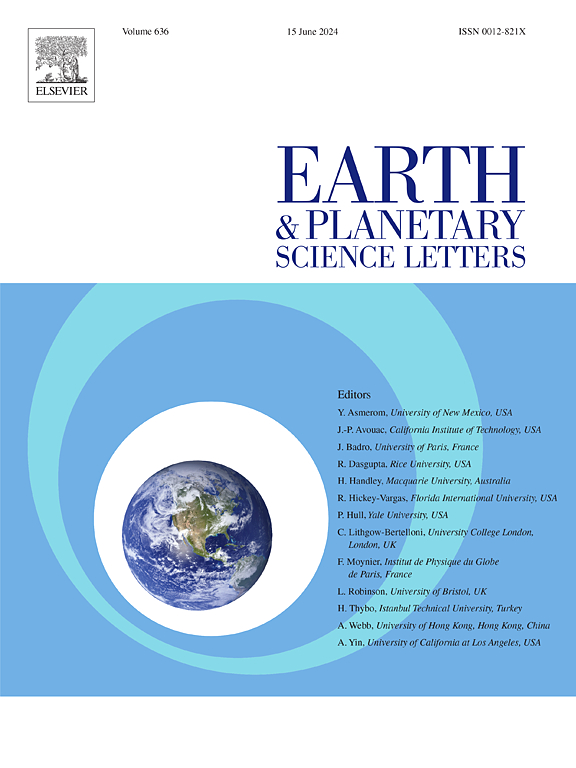日本西部能登半岛深层地壳地震群上方发生的 MW 7.5 级大地震中的浅层地壳破裂
IF 4.8
1区 地球科学
Q1 GEOCHEMISTRY & GEOPHYSICS
引用次数: 0
摘要
2024 年 1 月 1 日,能登半岛沿日本西海岸发生了一次破坏性 MW 7.5 地震。能登半岛沿岸浅层大地震的发生,尤其是在较深的长持续时间的成片地震群之上,是一种不寻常的地震现象,需要对其相互作用进行深入研究。2024 年地震在 2020 年 11 月开始的持续时间较长的地震群的上倾端附近以 0.5-1.0 km s-1 的初始低平均破裂速度成核。通过对密集的地震、大地测量和海啸观测数据进行分析,可以很好地解决半岛下方地壳向东北方向延伸的大面积浅层滑移问题,揭示了断层期间以双边两级断裂扩展为特征的异质滑移分布。沿半岛西北侧延伸至海底附近的向东南倾斜的推力断层的 150 千米范围内发生了多处高达 8 米的滑移。半岛西北沿岸出现了高达 5 米的隆起。在断裂之前,上倾流体迁移似乎削弱了浅层断层,并影响了最初缓慢的断裂扩展,这凸显了监测世界性地震群演变的必要性。本文章由计算机程序翻译,如有差异,请以英文原文为准。
Shallow crustal rupture in a major MW 7.5 earthquake above a deep crustal seismic swarm along the Noto Peninsula in western Japan
A damaging MW 7.5 earthquake struck the western coast of Japan along the Noto Peninsula on January 1, 2024. The initiation of large shallow earthquakes along the Noto Peninsula, particularly above deeper long-duration patchy seismic swarms, presents an unusual seismic phenomenon that warrants in-depth investigation of their interactions. The 2024 earthquake nucleated with an initial low average rupture velocity of 0.5–1.0 km s-1 near the up-dip end of a long-lasting seismic swarm that commenced in November 2020. Analysis of dense seismic, geodetic, and tsunami observations provides good resolution of large shallow slip in the crust below the peninsula and extending offshore to the northeast, revealing a heterogeneous slip distribution characterized by bilateral two-stage rupture expansion during the faulting. Up to 8 m of slip occurred in several patches along ∼150 km of the southeastward-dipping thrust fault, which extends to near the seafloor along the northwest side of the peninsula. Up to 5 m of uplift occurred along the peninsula's northwestern coast. Up-dip fluid migration appears to have weakened the shallow fault prior to failure and influenced the initial slow rupture expansion, highlighting the need to monitor the evolution of worldwide swarms.
求助全文
通过发布文献求助,成功后即可免费获取论文全文。
去求助
来源期刊

Earth and Planetary Science Letters
地学-地球化学与地球物理
CiteScore
10.30
自引率
5.70%
发文量
475
审稿时长
2.8 months
期刊介绍:
Earth and Planetary Science Letters (EPSL) is a leading journal for researchers across the entire Earth and planetary sciences community. It publishes concise, exciting, high-impact articles ("Letters") of broad interest. Its focus is on physical and chemical processes, the evolution and general properties of the Earth and planets - from their deep interiors to their atmospheres. EPSL also includes a Frontiers section, featuring invited high-profile synthesis articles by leading experts on timely topics to bring cutting-edge research to the wider community.
 求助内容:
求助内容: 应助结果提醒方式:
应助结果提醒方式:


